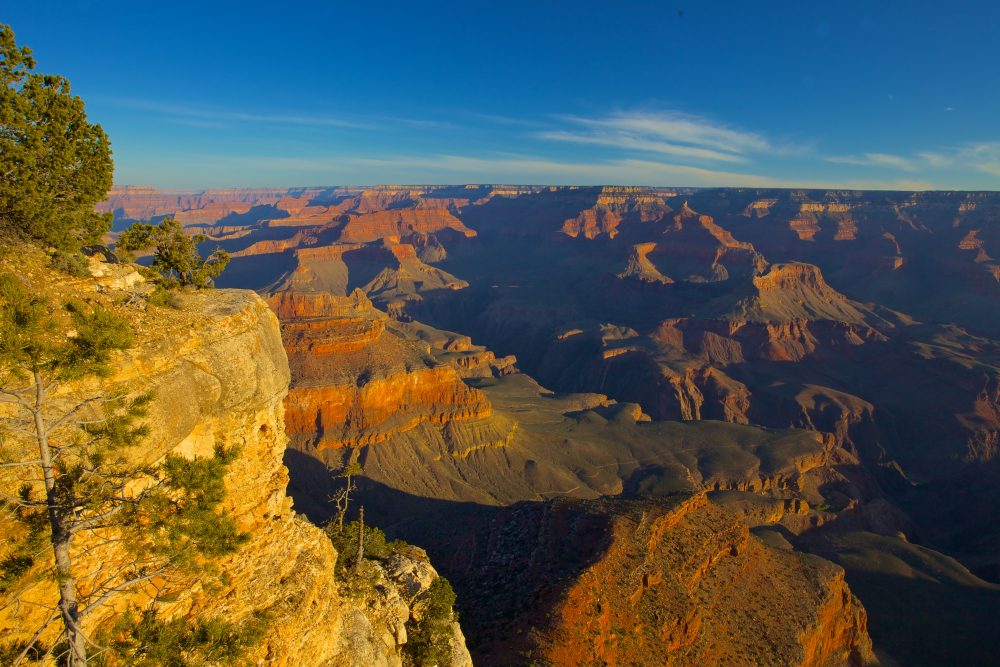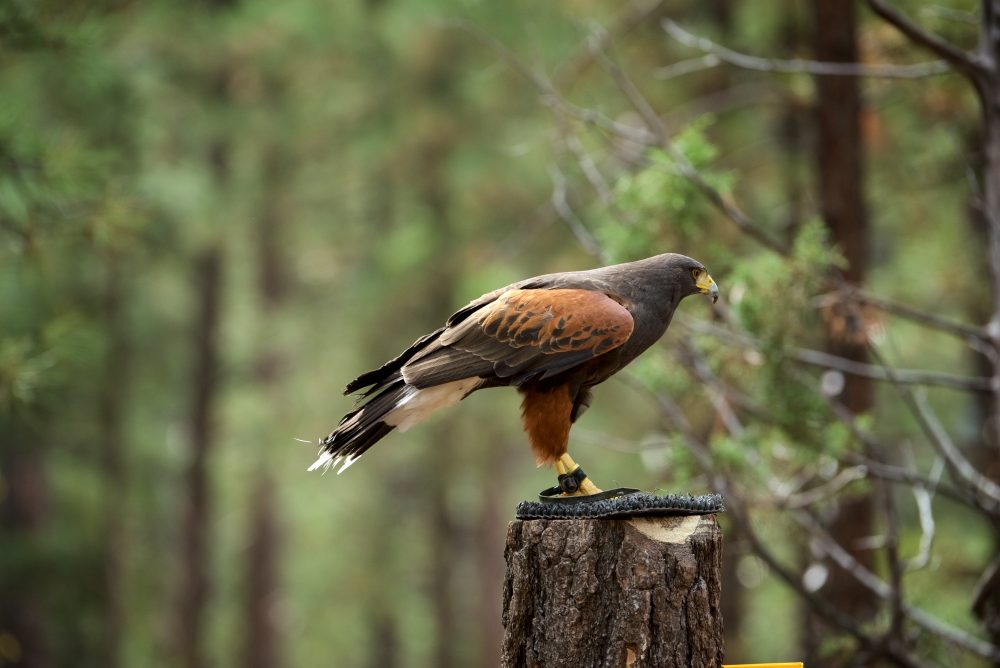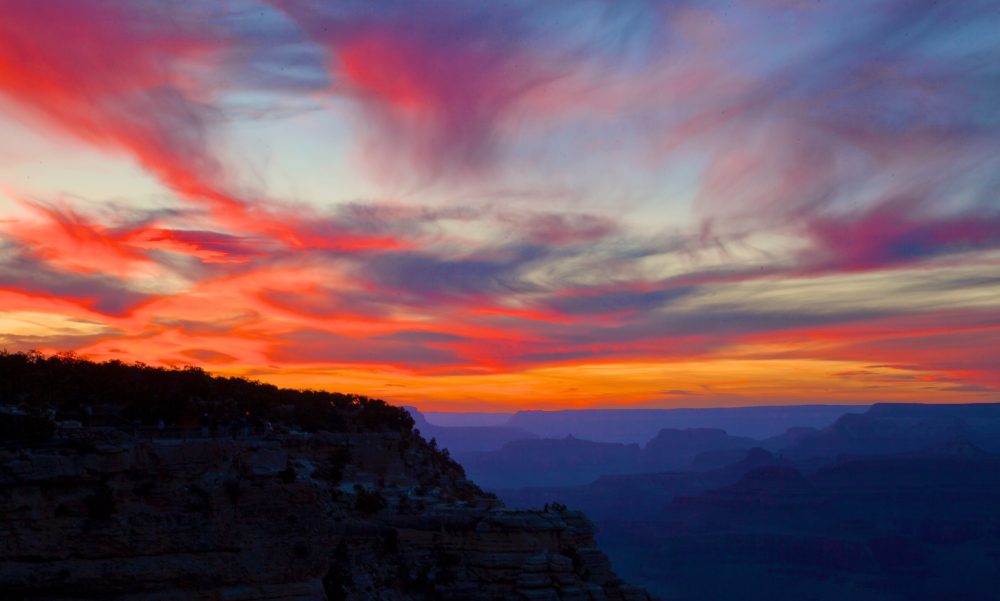What to know for visiting the Grand Canyon in winter
With its dramatic red rock, ancient geological formations, and fun and challenging hiking trails with spectacular views, the Grand Canyon is one of the most popular destinations for outdoor adventurers. If you’re planning a winter excursion, here are some travel tips for traveling in the Grand Canyon in winter and advice to make the most of your visit.
1. Winter is a great time to visit
The Grand Canyon is a popular destination, so the warmer months often bring crowds of tourists. In winter, however, the Grand Canyon is free from throngs of people and offers clear skies and cooler temperatures, perfect for long hikes in the desert sun. Much of the park stays open, other than inclement weather conditions, so you won’t have to worry about missing out on the best sights and trails. Best of all, snowfall gives the entire park an enchanting look and some of the most beautiful photos you could possibly take, which is more than enough reason for a winter trip.
2. Stop in the visitor center for know-before-you-go tips
The visitor center is a useful resource for traveling in the Grand Canyon, especially in winter. You can learn a lot from talking to the park rangers about the park highlights and hazards, and there are exhibits to discover little-known facts you wish you knew about the canyon’s history. You can also get maps and a suggested itinerary at the visitor center to plan your trip and anticipate any closures or hazardous areas. If you want to bring back some souvenirs, the visitor center has a gift shop with park memorabilia, clothing and other mementos of the experience to take home with you.
3. What to pack
It may be the desert, but the elevation of the Grand Canyon can cause it to dip to frigid temperatures in winter. It’s common to experience days at or below freezing, and the temperatures drop even further when the sun goes down.
To stay safe, it’s important to pack all the essentials you’re going to need for winter hikes. Be sure to bring plenty of warm layers, including insulating underclothing, waterproof hats and gloves, a scarf, and warm winter boots that are designed for hiking. You may want to bring hiking poles and crampons for better traction on slippery trails.
4. Where to eat
You could spend hours hiking in the Grand Canyon, so it’s best to bring some hearty snacks and drinks with you to ensure you have fuel on the trip. Once you’re done exploring, however, you can stop in the restaurants of the Grand Canyon Village for a full meal. Some of the best restaurant options include the Bright Angel Restaurant and the El Tovar Dining Room, which offer an array of delicious dishes and views of the canyon while you dine.
5. Where to go
The South Rim of the canyon is open all year round, and you can visit Grand Canyon Village for activities and tour options. The South Rim is divided into 3 districts: Mather Point, Market Plaza, and the Historic District. Within these districts, you’ll find parking areas, shuttle buses, a general store, a railroad depot, historic lodges, and a bank. If parts of the canyon are closed because of weather, you can spend some time exploring the historic sites in the village and visiting the Kolb Studio, an excellent art gallery with art and photography showcasing the beauty of the park.

6. Take a shuttle to snow-covered areas
Though winter is a lovely time for an adventure in the Grand Canyon, it’s best to anticipate some snow-covered areas and slippery conditions that may limit your exploration. If you really want to see a specific trail or vista point that’s closed or dangerous because of snow, you can take a shuttle from the visitor center to view the landscape from a safe distance. There are multiple shuttle routes that take you through some of the best viewing areas. You could also book an organized tour from an experienced tour guide.
7. Check out native wildlife
The canyon is home to an array of unique wildlife, such as mule deer, bald eagles, California condors, squirrels, elk, and more. In winter, you have a good chance of seeing herds or packs of animals as they venture out on the warmer days, especially with fewer crowds, so you can experience the wildlife. Be sure to view the animals from a distance, however, and avoid antagonizing or approaching wildlife. Though they’re beautiful, these animals can be dangerous and are best viewed from afar.

8. If you’re driving, pack an emergency kit
Self-guided driving tours are a great option to explore the canyon, but what to know before you go is that you may encounter inclement weather or car trouble. It’s best to be prepared with an emergency kit that includes supplies like a first aid kit, battery powered radios and extra batteries, a tow chain, matches, jumper cables, a shovel, a flashlight, extra food and water, blankets, basic medications, road salt, and extra gloves and socks. If the worst happens, these supplies can help you get your vehicle to safety or weather the time while you wait for emergency services.
9. Be sure to check out a sunset
One of the highlights of visiting the Grand Canyon, especially in winter, is that it offers some of the most spectacular sunsets in the world. With shorter days in winter, it’s easy to catch a sunset during the early hours. Some of the most popular viewing areas for sunsets include Mather Point by the visitor center and Yavapai Point in the park. As the sun goes down, the sky will be gorgeous shades of purple and pink, so you may want to pack a camera to capture the moment.

10. Activities in winter
Self-guided and organized scenic driving tours are popular ways to experience the Grand Canyon, but there are other options for winter activities. You can hike the many trails of the South Rim and take in the views from the vista points, or you could enjoy a mule ride along the canyon edge or near the river. There are also mountain biking trails that you can take in winter for a thrilling experience. Depending on the weather, you may enjoy a river trip to experience the canyon from below.
Ready to plan your trip?
With this essential information you need before visiting the Grand Canyon, you’re ready for a fun, safe, and exciting experience. Visit Expedia to check out deals on Grand Canyon vacations and get ready to plan the trip of a lifetime.
More Articles With Interests
From watching the first four teams in Dayton to the final buzzer beater in Atlanta, here’s your guide to buying NCAA Basketball Tournament tickets for 2023.
Summer’s not just a great time to BBQ or hit the beach; it’s also the perfect opportunity to explore America’s national parks.
Do workcations work? Here’s what Americans think about them.
This Lunar New Year, Expedia returns with a "roaring" new set of travel predictions for the Year of the Tiger, developed by popular Hong Kong-based Fengshui Master, Qi Xian Yu.
The global impact of coronavirus is affecting travelers everywhere. Here's how you can prepare and what to expect if you booked travel with Expedia.